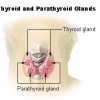By Lewis Perdue Chairman, Co-Founder, Center for Research on Environmental Chemicals in Humans Co-Principal Investigator, Stealth Syndromes Human Study Last Friday’s draft of a new study by the FDA on the safety of the chemical Bisphenol A (BPA) is a glaring example of substandard federal regulatory science that continues to place public health at risk. […]
Archive | Project Original Publications
Heat Shock Protein Hsp27 points to causal link between BPA and cancer & chemotherapy resistance
NOTE: This is a case study using a new precision paradigm on how to assess risks of environmental chemicals by reliance on the pharmaceutical development process and its science. More about that new paradigm at: Precision evaluation of environmental chemical risk assessment The development of a cancer’s resistance to chemotherapy has become a disheartening and […]
Precision evaluation of environmental chemical risk assessment: Using existing pharmaceutical evaluation results as a more accurate paradigm
The PharmBlocker: A new paradigm in assessing the risks of environmental chemicals PharmBlocker: An environmental chemical which acts on the identical cellular process as a pharmaceutical, but in a manner that decreases the effectiveness of the drug therapy. In plain words: If a substance is causal enough to investigate as a pharmaceutical, then it is […]
Low-Dose BPA Paper in Toxicological Sciences Fatally Flawed & Must Be Retracted. Also Raises Doubts About Integrity Of Federal Lab Animal Facility
See also: Flaws in design, execution and interpretation limit CLARITY‐BPA’s value for risk assessments of bisphenol A By Lewis Perdue and Rebecca L. Yeamans NOTE: An earlier version of this paper originally appeared on nano-active.com on Feb., 24, 2014. This version is enormously expanded to address peer-review suggestions from multiple prominent researchers. Those who helped […]

Strongest Evidence Yet Between BPA and Thyroid Cancer
Most studies to date have offered equivocal links between BPA and cancer, using terms like “associated with” and “linked to.” These vague connections fail to alert consumers to the actual connections. However, the original research we did at our old, proog-of-concept site, Nano-Active discovered solid, causal connections. This post is from the first connection we […]